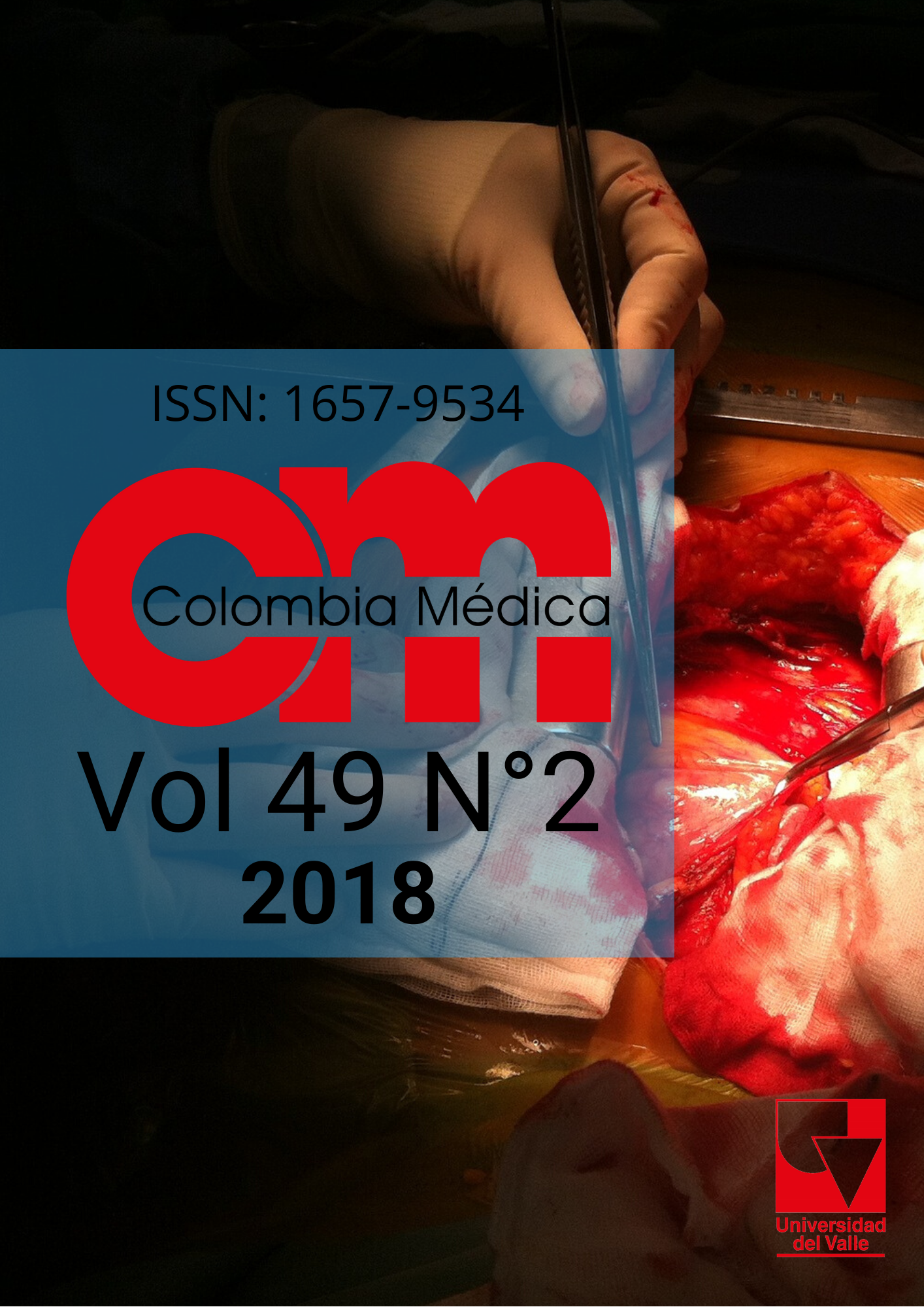As-needed endotracheal suctioning protocol vs a routine endotracheal suctioning in Pediatric Intensive Care Unit: A randomized controlled trial
Main Article Content
Objective: To compare two endotracheal suctioning protocols according to morbidity, days of mechanical ventilation, length of stay in the Pediatric Intensive Care Unit (PICU), incidence of VentilatorAssociated Pneumonia (VAP) and mortality.
Methods: A Pragmatic randomized controlled trial performed at University Hospital Pablo Tobón Uribe, Medellin-Colombia. Fortyfive children underwent an as-needed endotracheal suctioning protocol and forty five underwent a routine endotracheal suctioning protocol. Composite primary end point was the presence of hypoxemia, arrhythmias, accidental extubation and heart arrest. A logistic function trough generalized estimating equations (GEE) were used to calculate the Relative Risk for the main outcome.
Results: Characteristics of patients were similar between groups. The composite primary end point was found in 22 (47%) of intervention group and 25 (55%) children of control group (RR= 0.84; 95% CI: 0.56-1.25), as well in 35 (5.8%) of 606 endotracheal suctioning performed to intervention group and 48(7.4%) of 649 performed to control group (OR= 0.80; 95% CI: 0.5-1.3).
Conclusions: There were no differences between an as-needed and a routine endotracheal suctioning protocol. Trial Registration: ClinicalTrials.gov identifier: NCT01069185
Downloads

This work is licensed under a Creative Commons Attribution-NonCommercial 4.0 International License.
The copy rights of the articles published in Colombia Médica belong to the Universidad del Valle. The contents of the articles that appear in the Journal are exclusively the responsibility of the authors and do not necessarily reflect the opinions of the Editorial Committee of the Journal. It is allowed to reproduce the material published in Colombia Médica without prior authorization for non-commercial use

